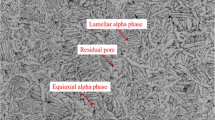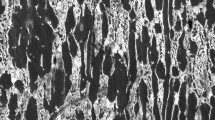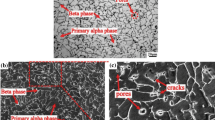Abstract
The application and demand of titanium alloys has been steadily increasing in aviation due to the excellent high-temperature performance. Powder metallurgy (PM) technology has been widely applied in the production of titanium alloy but with more disadvantages. The application of the cross-wedge rolling (CWR) process to manufacture powder sintering titanium alloy has received the least attention but is most significant. This paper presents a numerical and experimental study on the CWR of sintering TC4 alloy blade preforms. The deformation behavior of sintering TC4 alloy was investigated, and a constitutive equation at peak stress was developed and implemented into a finite element (FE) model, by which we analyzed the effect of tool parameters, forming quality, and forming mechanism in the CWR process. We also investigated the effect of the deformation temperature and area reduction on forming quality with CWR experiments. The results show that the deformation behavior of sintering TC4 alloy is sensitive to temperature and strain rate, and the constitutive equation is capable of predicting the flow stress for the CWR process. Among the tool parameters, area reduction is the most significant factor and showed the best performance at less than 65.9%. An applicable range of process parameters for the CWR of sintering TC4 alloy was obtained. After rolling, the relative density improves from 86.21 to 98.2%, and the mechanical properties of the workpiece are significantly enhanced, especially for elongation. Compared with 45# steel, the temperature difference in the radial direction (ΔT) of TC4 alloy is much larger due to a lower thermal conductivity. However, the rolling force and torque of TC4 alloy needed in the CWR process are only half as much as those of 45#.
Similar content being viewed by others
References
Boyer RR (1996) An overview on the use of titanium in the aerospace industry. Mater Sci Eng A 213(1–2):103–114. doi:10.1016/0921-5093(96)10233-1
Boyer RR, Welsch G, Collings EW (1994) Materials properties handbook—titanium alloys. ASM International, Materials Park, OH
German RM (1998) Powder metallurgy of iron and steel. Metall Mater Trans A 198:578–579
Kushchevskii AE, Bondar VT, Krylova NA, Mozol TF, Romanenko OM (1990) An investigation of the structure of powder metallurgy iron with different porosities by scanning electron microscopy. Powder Metal Met C 29(9):745–748. doi:10.1007/BF00795587
Wang HY, Jiang QC, Wang Y, Ma BX, Zhao F (2005) Fabrication of TiB2 particulate reinforced magnesium matrix composite by powder metallurgy. J Alloy Compd 386(1):177–181. doi:10.1016/j.matlet.2004.04.038
Grison J, Remy L (1997) Fatigue failure probability in a powder metallurgy Ni-base superalloy. Eng Fract Mech 57(1):41–55. doi:10.1016/S0013-7944(97)00006-4
He GA, Liu F, Huang L, Huang ZW, Jiang L (2016) Microstructure evolutions and nucleation mechanisms of dynamic recrystallization of a powder metallurgy Ni-based superalloy during hot compression. Mater Sci Eng A 677:496–504. doi:10.1016/j.msea.2016.09.083
Liu Y, Chen LF, Tang HP, Liu CT, Liu B, Huang BY (2006) Design of powder metallurgy titanium alloys and composites. Mater Sci Eng A 418(1–2):25–35. doi:10.1016/j.msea.2005.10.057
McEldowney DJ, Tamirisakandala S, Miracle DB (2010) Heat-treatment effects on the microstructure and tensile properties of powder metallurgy Ti-6Al-4V alloys modified with boron. Metall Mater Trans A 41(4):1003–1015. doi:10.1007/s11661-009-0157-y
Roush ED, Kobryn PA, Semiatin SL (2001) Anisotropy of plastic flow and microstructure evolution during hot working of laser-deposited Ti-6Al-4V. Scripta Mater 45:717–724. doi:10.1016/S1359-6462(01)01084-3
Semiatin SL, Kobryn PA, Roush ED, Furrer DJ, Howson TE, Boyer RR, Chellman DJ (2001) Plastic flow and microstructure evolution during thermomechanical processing of laser-deposited Ti-6Al-4V preforms. Metall Mater Trans A 32(7):1801–1811. doi:10.1007/s11661-001-0156-0
Lafer M, Bouvard D, Stutz P, Pierronnet M, Raisson G (1992) Densification behaviour of particle-reinforced superalloy powder during hot isostatic pressing. Springer, the Netherlands, pp 209–214
Anderson MJ, McGuire K, Zante RC, Ion WJ, Rosochowski A, Brooks JW (2013) Identifying the dominant failure mode in the hot extrusion tooling used to forge nickel based superalloy. J Mater Process Tech 213(1):111–119. doi:10.1016/j.jmatprotec.2012.09.002
Immarigeon JPA, Floyd PH (1981) Microstructural instabilities during superplastic forging of a nickel-base superalloy compact. Metall Mater Trans A 12(7):1177–1186. doi:10.1007/BF02642331
Zhang MJ, Li FG, Wang SY, Liu CY (2011) Effect of powder preparation technology on the hot deformation behavior of HIPed P/M nickel-base superalloy FGH96. Mater Sci Eng A 528(12):4030–4039. doi:10.1016/j.msea.2011.01.118
Yang CP, Ma JW, Hu ZH (2017) Analysis and design of cross wedge rolling hollow axle sleeve with mandrel. J Mater Process Tech 239:346–358. doi:10.1016/j.jmatprotec.2016.09.002
Ji HC, Liu JP, Wang BY, Zheng ZH, Huang JH, Hu ZH (2015) Cross-wedge rolling of a 4Cr9Si2 hollow valve: explorative experiment and finite element simulation. Int J Adv Manuf Technol 77(1–4):15–26. doi:10.1007/s00170-014-6363-9
Pater Z, Gontarz A, Weroński W (2006) Cross-wedge rolling by means of one flat wedge and two shaped rolls. J Mater Process Tech 177(1–3):550–554. doi:10.1016/j.jmatprotec.2006.03.232
Pater Z (2010) Development of cross-wedge rolling theory and technology. Steel Res Int 81(9):25–32
Bartnicki J, Pater Z (2005) Numerical simulation of three-rolls cross-wedge rolling of hollowed shaft. J Mater Process Tech 164-165:1154–1159. doi:10.1016/j.jmatprotec.2005.02.120
Pater Z (2000) Theoretical and experimental analysis of cross wedge rolling process. Int J Mach Tools Manuf 40(1):49–63. doi:10.1016/S0890-6955(99)00047-4
Li Q, Lovell MR, Slaughter W, Tagavi K (2002) Investigation of the morphology of internal defects in cross wedge rolling. J Mater Process Tech 125:248–257. doi:10.1016/S0924-0136(02)00303-5
Li Q, Lovel l MR. (2004) The establishment of a failure criterion in cross wedge rolling. Int J Adv Manuf Technol 24(3–4). doi:10.1007/s00170-003-1607-0
Urankar S, Lovell MR, Morrow C, Li Q, Kawada K (2006) Establishment of failure conditions for the cross-wedge rolling of hollow shafts. J Mater Process Tech 177(1–3):545–549. doi:10.1016/j.jmatprotec.2006.04.052
Pater Z, Andrzej G, Tofil A (2011) Analysis of the cross-wedge rolling process of toothed shafts made from 2618 aluminium alloy. J Shanghai Jiaotong Univ 16(2):162–166. doi:10.1007/s12204-011-1119-2
Bartnicki J, Tomczak J, Pater Z (2015) Numerical analysis of the cross-wedge rolling process by means of three tools of stepped shafts from aluminum alloy 7075. Arch Metall Mater 60(1):433–435. doi:10.1515/amm-2015-0071
Zhang N, Wang BY, Lin JG (2012) Effect of cross wedge rolling on the microstructure of GH4169 alloy. Int J Min Met Mater 19(9):836–842. doi:10.1007/s12613-012-0636-9
Chen Y, Gan HY, Zhang SH, Cheng M, Song HW (2016) Analysis of deformation and internal defect in flat-wedge cross-wedge rolling of GH4169 superalloy. Mater Sci Forum 879:324–329. doi:10.4028/www.scientific.net/MSF.879.324
Mirahmadi SJ, Hamedi M, Ajami S (2014) Investigating the effects of cross wedge rolling tool parameters on formability of Nimonic® 80A and Nimonic® 115 superalloys. Int J Adv Manuf Technol 74(5–8):995–1004. doi:10.1007/s00170-014-6047-5
Çakırcalı M, Kılıçaslan C, Güden M, Kıranlı E, Shchukin VY, Petronko VV (2013) Cross wedge rolling of a Ti6Al4V (ELI) alloy: the experimental studies and the finite element simulation of the deformation and failure. Int J Adv Manuf Technol 65(9–12):1273–1287. doi:10.1007/s00170-012-4256-3
Jia Z, Zhou J, Ji JJ, Yu YY, Xiao C (2012) Influence of tool parameters on internal voids in cross wedge rolling of aluminum alloy parts. T Nonferr Metal Soc 22:s21–s26. doi:10.1016/S1003-6326(12)61678-1
Xu X, Dong LM, Ba HB, Zhang ZQ, Yang R (2016) Hot deformation behavior and microstructural evolution of beta C titanium alloy in β phase field. T Nonferr Metal Soc 26(11):2874–2882. doi:10.1016/S1003-6326(16)64416-3
Bai Q, Lin JG, Dean TA, Balint DS, Gao T, Zhang Z (2013) Modelling of dominant softening mechanisms for Ti-6Al-4V in steady state hot forming conditions. Mater Sci Eng A 559:352–358. doi:10.1016/j.msea.2012.08.110
Yang L, Wang BY, Liu G, Zhao HJ, Xiao WC (2015) Behavior and modeling of flow softening and ductile damage evolution in hot forming of TA15 alloy sheets. Mater Design 85:135–148. doi:10.1016/j.matdes.2015.06.096
Peng XN, Guo HZ, Shi ZF, Qin C, Zhao ZL (2013) Constitutive equations for high temperature flow stress of TC4-DT alloy incorporating strain, strain rate and temperature. Mater Design 50(17):198–206. doi:10.1016/j.matdes.2013.03.009
Peng XN, Guo HZ, Shi ZF, Qin C, Zhao ZL, Yao ZK (2014) Study on the hot deformation behavior of TC4-DT alloy with equiaxed α+β starting structure based on processing map. Mater Sci Eng A 605:80–88. doi:10.1016/j.msea.2014.03.047
Cai J, Li FG, Liu TY, Chen B, He M (2011) Constitutive equations for elevated temperature flow stress of Ti–6Al–4V alloy considering the effect of strain. Mater Design 32(3):1144–1151. doi:10.1016/j.matdes.2010.11.004
Pater Z (2006) Finite element analysis of cross wedge rolling. J Mater Process Tech 173(2):201–208. doi:10.1016/j.jmatprotec.2005.11.027
Author information
Authors and Affiliations
Corresponding author
Ethics declarations
Conflicts of interest
The authors declare that they have no conflict of interest.
Rights and permissions
About this article
Cite this article
Li, J., Wang, B., Ji, H. et al. Numerical and experimental investigation on the cross-wedge rolling of powder sintering TC4 alloy. Int J Adv Manuf Technol 94, 2149–2162 (2018). https://doi.org/10.1007/s00170-017-0992-8
Received:
Accepted:
Published:
Issue Date:
DOI: https://doi.org/10.1007/s00170-017-0992-8




